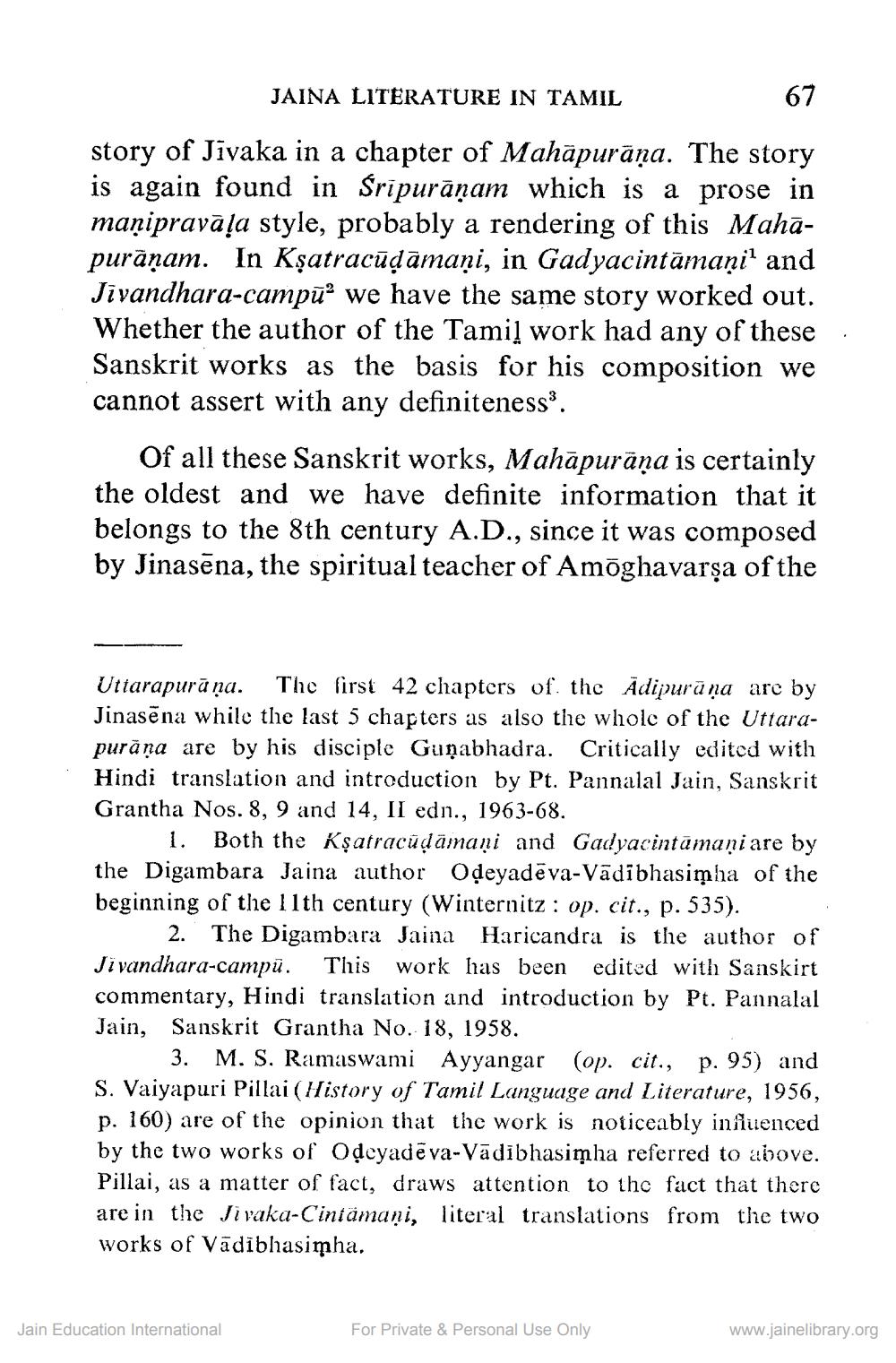________________
JAINA LITERATURE IN TAMIL
67
story of Jivaka in a chapter of Mahapuraṇa. The story is again found in Śrīpurāṇam which is a prose in manipravāļa style, probably a rendering of this Mahapurāṇam. In Kṣatracūḍāmaṇi, in Gadyacintāmaṇi1 and Jivandhara-campu2 we have the same story worked out. Whether the author of the Tamil work had any of these Sanskrit works as the basis for his composition we cannot assert with any definiteness3.
Of all these Sanskrit works, Mahāpurāṇa is certainly the oldest and we have definite information that it belongs to the 8th century A.D., since it was composed by Jinasēna, the spiritual teacher of Amōghavarșa of the
Uttarapura ṇa. The first 42 chapters of the Adipurana are by Jinasena while the last 5 chapters as also the whole of the Uttarapurana are by his disciple Gunabhadra. Critically edited with Hindi translation and introduction by Pt. Pannalal Jain, Sanskrit Grantha Nos. 8, 9 and 14, II edn., 1963-68.
1. Both the Ksatracuḍāmaṇi and Gadyacintamani are by the Digambara Jaina author Oḍeyadeva-Vadībhasimha of the beginning of the 11th century (Winternitz: op. cit., p. 535).
2. The Digambara Jaina Haricandra is the author of Jivandhara-campū. This work has been edited with Sanskirt commentary, Hindi translation and introduction by Pt. Pannalal Jain, Sanskrit Grantha No. 18, 1958.
3. M. S. Ramaswami Ayyangar (op. cit., p. 95) and S. Vaiyapuri Pillai (History of Tamil Language and Literature, 1956, p. 160) are of the opinion that the work is noticeably influenced by the two works of Oḍeyadeva-Vadībhasimha referred to above. Pillai, as a matter of fact, draws attention to the fact that there are in the Jivaka-Cintamani, literal translations from the two works of Vadībhasimha.
Jain Education International
For Private & Personal Use Only
www.jainelibrary.org




